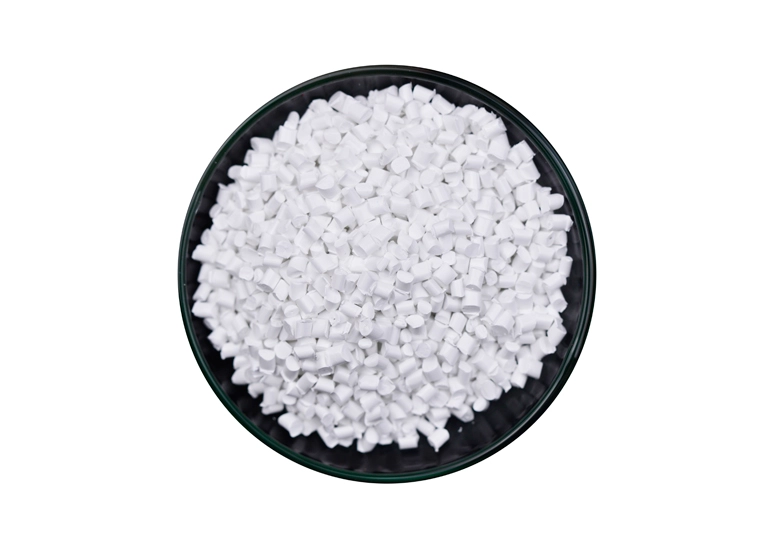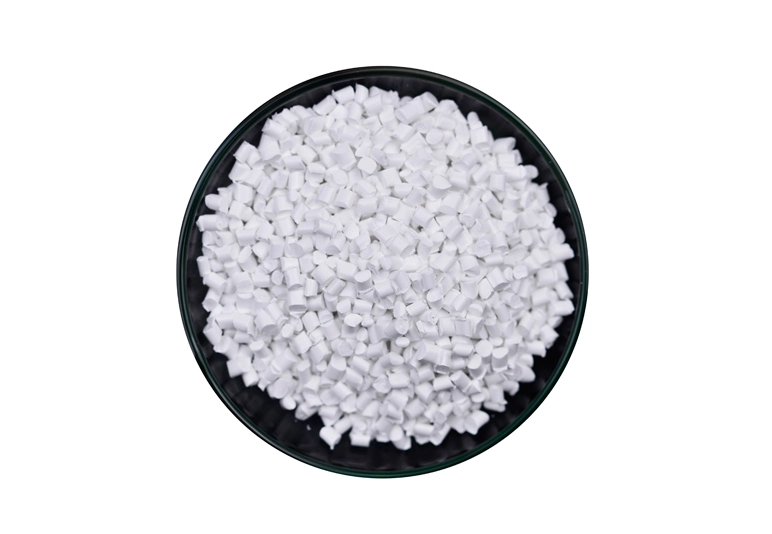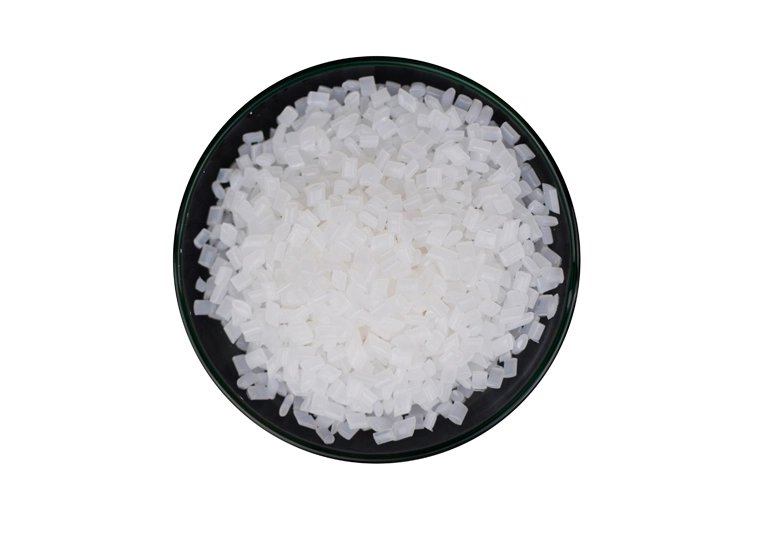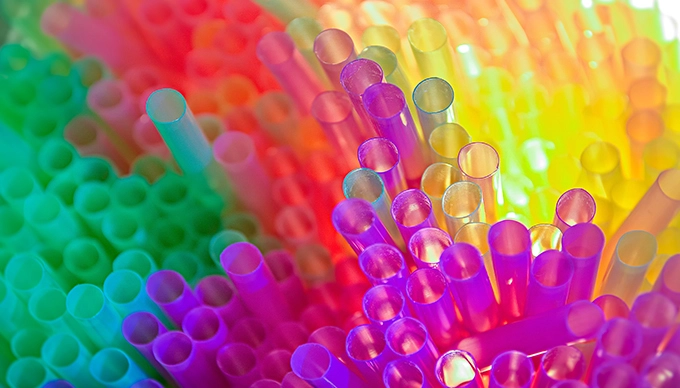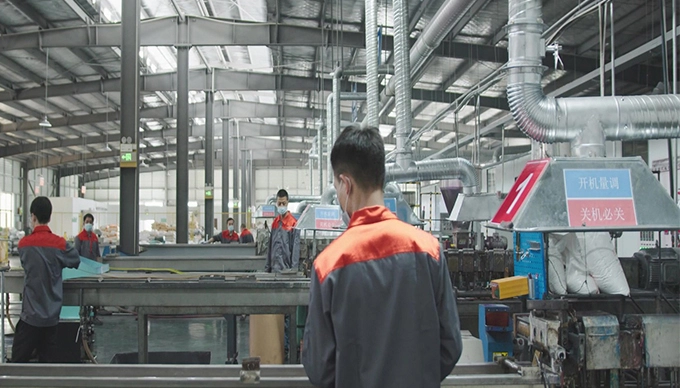Products related to color masterbatch in daily life, such as household appliances, automobiles, toys, daily chemicals, office supplies, cables and pipes, chemical fibers, non-woven fabrics, food packaging, etc., all have a relatively large correlation with color masterbatch.
More than a quarter of modern plastic production is used to make plastic packaging materials. With the improvement of people's living standards, consumers' requirements for product packaging are also increasing, and plastic packaging products have a good development prospect with their wide variety, superior performance, adaptability and wide application, which will drive the market demand for masterbatches. The downstream industries such as home appliance, automobile and packaging have high requirements for color masterbatch coloring and large usage, whose development plays an important role in promoting the development of the color masterbatch industry.
In addition, to meet the needs of customers, color masterbatches can also add additives to produce various types of modified products, such as flame retardant, permeability, antibacterial, antistatic, antioxidant and other additives.
Plastic packaging materials are one of the important uses of masterbatches. These packaging materials have light weight but good mechanical properties, suitable barrier and permeability, good chemical stability, good molding performance and low processing cost, and good secondary processing and decorative properties, so they have become the largest and most versatile packaging materials among metal, ceramic, paper, plastic and fiber packaging materials.
Classification of Masterbatches
Masterbatches used in plastic packaging materials can be simply divided into two categories according to the composition of the additives used: color masterbatch (the main component is the colorant) and functional masterbatch (such as anti-aging additives, antistatic agents, flame retardants, fillers, etc.).
Color Masterbatch
Color masterbatch is the most widely used coloring method for plastic coloring. Different colorants give different color properties to plastic products. Such as color phase, coloring power, coverage, transparency, color fastness (such as sunlight resistance, weathering, solvent resistance, migration resistance, heat resistance) and other properties.
Masterbatch is a kind of aggregate made by evenly loading an extraordinary amount of pigment or dye into a resin. Masterbatch is a granule of colorant, carrier resin, dispersant and other auxiliaries to form a certain concentration of colorant. When molding the product, a certain amount of masterbatch is added according to the coloring requirements, so that the product contains the required amount of colorant to meet the coloring requirements. Masterbatches can be classified according to the coloring resin, such as ABS masterbatches, PC masterbatches, PP masterbatches, etc.; also according to the coloring resin plus process, there are three major types of masterbatches: injection molding, blown film and extrusion grade. Color masterbatches have higher coloring power, lower dosage and stable quality due to pretreatment of pigments, convenient transportation, storage and use, and greatly reduced environmental pollution.
There are many types of masterbatches, which can be classified according to carrier, application and function. Among them, according to the function, they can be divided into the following categories.
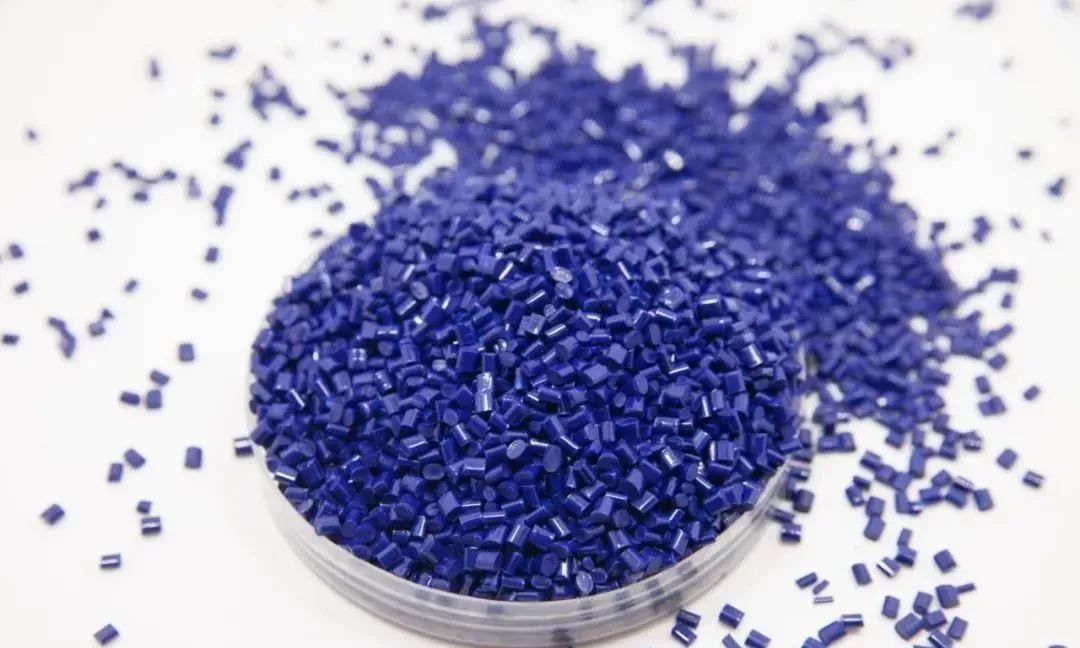
Coloring masterbatch
Its main function is to make plastic products with various colors, and most plastic products only require coloring of the products;
Functional masterbatches
They are used to give certain functional effects to plastics, such as anti-aging masterbatches, anti-static masterbatches, anti-bacterial masterbatches, flame retardant masterbatches, toughening masterbatches, reinforcing masterbatches, etc;
Coloring and functional masterbatches
According to the requirements of plastic products, coloring masterbatches play a dual role of coloring and improving performance, thus reducing the production cost for users of color masterbatches and allowing users to better control the production process.
For plastic packaging materials, the purpose of coloring is not only to meet the ordinary color marking requirements, but also to attract consumers' attention and promote the sales of the products. Plastic masterbatches, with tailor-made function, can provide the required color for package material manufacturers.
In addition to the traditional white, black and gray non-color system and the common red, orange, yellow, green, green, blue, blue, purple and brown color system, we can also provide a variety of special color effects such as pearlescent effect, metallic effect, multi-angle color change effect, thermochromic effect, photochromic effect, whitening effect, luminescent effect, fluorescent effect, marble pattern effect, imitation wood grain effect, glitter or spot effect, etc., which provide unique visual appearance for package products and enhance their sales. provide a unique visual appearance and enhance the attractiveness of the product.
Functional Masterbatch
Functional masterbatches are masterbatches that contain functional additive components referring to other than color, the specific function of which depends entirely on the active ingredient contained. These functions can be simply divided into three main categories:
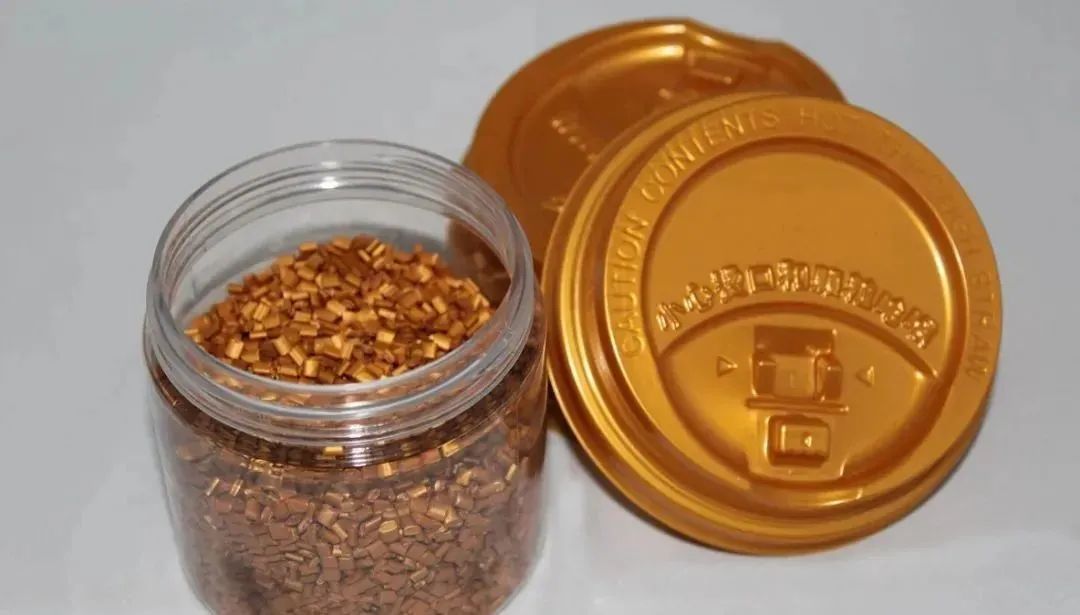
The first category: Improvement of plastic molding and processing properties
Such as processing additives masterbatches to reduce mold head fouling and eliminate melt rupture; cooling masterbatches to reduce the temperature of the molding process; drying masterbatches to absorb water in raw materials; smooth masterbatches to facilitate the demolding of injection molded parts; anti-slip masterbatches to prevent the film from slipping when winding; anti-adhesive masterbatches to prevent the film from sticking to the film when unwinding; clearing masterbatches to save the material used for color change and clearing, etc.; the use of such functional masterbatches not only facilitates the molding The use of such functional masterbatches not only facilitates the operation of molding, but also improves the quality of products, and increases production efficiency and reduces energy consumption.
The second category: improve the physical and chemical properties of plastics
For example, anti-oxidation masterbatches to improve heat aging and inhibit color yellowing of parts; anti-aging masterbatches to improve the weather resistance of finished parts; nucleation masterbatches to improve the rigidity or transparency of molded parts; toughening masterbatches to improve the mechanical properties of molded parts; smooth masterbatches to reduce the friction coefficient of molded parts; opening masterbatches to reduce the opening torque of caps; thermal conductivity masterbatches to improve the thermal conductivity of plastic parts; conductive masterbatches to improve the electrical conductivity of plastics. Conductive masterbatches, filler masterbatches to improve the mechanical properties of plastics and reduce costs, etc.
The third category: increase product application function
Such as anti-static masterbatches to reduce the surface resistance of molded parts; flame retardant masterbatches to improve the fire resistance of materials; antimicrobial masterbatches to increase the resistance of plastics to microbial attack; barrier masterbatches to improve the permeation of plastic packaging materials to prevent gas (such as oxygen, carbon dioxide, water vapor); degradable masterbatches to reduce plastic pollution; odor removing masterbatches to remove odors; flavor enhancing masterbatches to add flavor to plastics; anti-fogging masterbatches to reduce fogging on the inner surface of food packaging films; anti-fogging masterbatches to prevent fogging and dripping. Anti-fogging masterbatches to reduce fogging on the inner surface of food packaging films; anti-rust masterbatches to prevent rusting of electronic components; laser masterbatches to provide laser coding effect; matting masterbatches to provide matte effect or even frosting effect; foam masterbatches to provide weight reduction, heat insulation, sound insulation and shock absorption, etc.
General masterbatches are single function. For example, color masterbatch only provides color function; anti-static masterbatch only provides anti-static function; sometimes, according to the requirements of product end-use, dual-function or even multi-function is needed, such as both coloring plastic package and improving application performance such as anti-aging, then coloring agent and anti-aging additives can also be compounded in one masterbatch, i.e. multi-function masterbatch.
Precautions for Using Masterbatches
The effect of using masterbatch is not only related to the quality of the masterbatch itself, but also related to the quality of the raw material used for molding, molding process, equipment and usage method. Improper use of masterbatches may cause molding defects in plastic packages and even produce scrap products. Therefore, the following issues need to be noted when using masterbatches:
Processability
The processing suitability of masterbatch, one is the applicability to the molding substrate. All masterbatches contain a certain amount of resin. Each masterbatch is only suitable for the molding resin with which it is compatible. If the masterbatches are not compatible, the molded parts may be peeled, delaminated, and lose mechanical properties; or even if they are compatible, the rheology of the melt is very different, which will cause the surface of the molded parts to produce flow marks, fusion marks, and color defects, affecting the appearance and performance of the product.
The processing suitability of the masterbatch, the second is the applicability of the form of plastic packaging materials. Plastic packaging materials have many forms, such as film, sheet, bottles, barrels, lids, etc., they are different requirements for the dispersion of additives. Different uses of plastic packaging materials for different degrees of sensitivity to the degree of dispersion of additives is not the same. Films and sheets require exceptionally well-dispersed masterbatches, while for thick-walled packages, such as chemical plastic packaging drums, the dispersion requirement is not high. Therefore, if blow molding or cast film uses ordinary injection molding grade masterbatches, there may be problems such as color spots, surface roughness or even small holes.
The third is the suitability of the masterbatch for the molding process. Due to the different sizes of plastic packages and different production rates, the molding cycle of some products is very short, such as the molding cycle of beverage bottle caps is only a few seconds, and some molding cycles are very long, such as plastic trays molding cycle of several minutes. Masterbatch is heat-resistant limits, for the molding cycle of long products, if the use of heat-resistant masterbatch is not high, it will produce discoloration, scorching, additives will disperse and lose its corresponding effectiveness.
The processing suitability of the masterbatch also includes the suitability of the metering equipment. For molding equipment equipped with automatic measuring devices, there are certain requirements for the particle size and uniformity of masterbatches, especially for volume measuring devices, which are especially high for the particle size and uniformity of masterbatches, if ordinary masterbatches are used, it may cause uneven measurement and affect the quality of molded parts.
Regulatory Compliance
The regulatory compliance of plastic masterbatches depends on the raw material used. Different industries have different regulatory compliance requirements for plastic packaging materials. For example, electrical packaging materials need to comply with ROHS requirements; food packaging materials need to comply with food contact plastic materials and products related regulations such as GB 9685-2016, GB4806.6-2016 and GB4806.7-2016; cosmetic packaging materials comply with the "Cosmetic Hygiene Code"; exported to the EU, but also If exported to the EU, they must also meet the requirements of ROHS. If the products meet the requirements of electrical industry regulations, they cannot be used for food packaging materials.
Performance Suitability
Different masterbatches have different performance suitability. For example, the color performance of masterbatches is not only related to the resin to be colored, but also to the shape of the molded part, the mold, and other auxiliary dosage during molding. Therefore, the same masterbatch used in different products may show excellent differences; for example, the migration resistance of plastic packaging materials is related to the contents of the packaging. When the same masterbatch is used to package different types of items, it may cause problems due to different migration properties. For functional masterbatches, there are more factors that affect the effect and need to be tested and evaluated. For example, anti-static masterbatch, there are quick-acting but short-term type; there are slow-acting but long-term type; and there are permanent type. If misused, it will not achieve the expected effect.
 English
English


